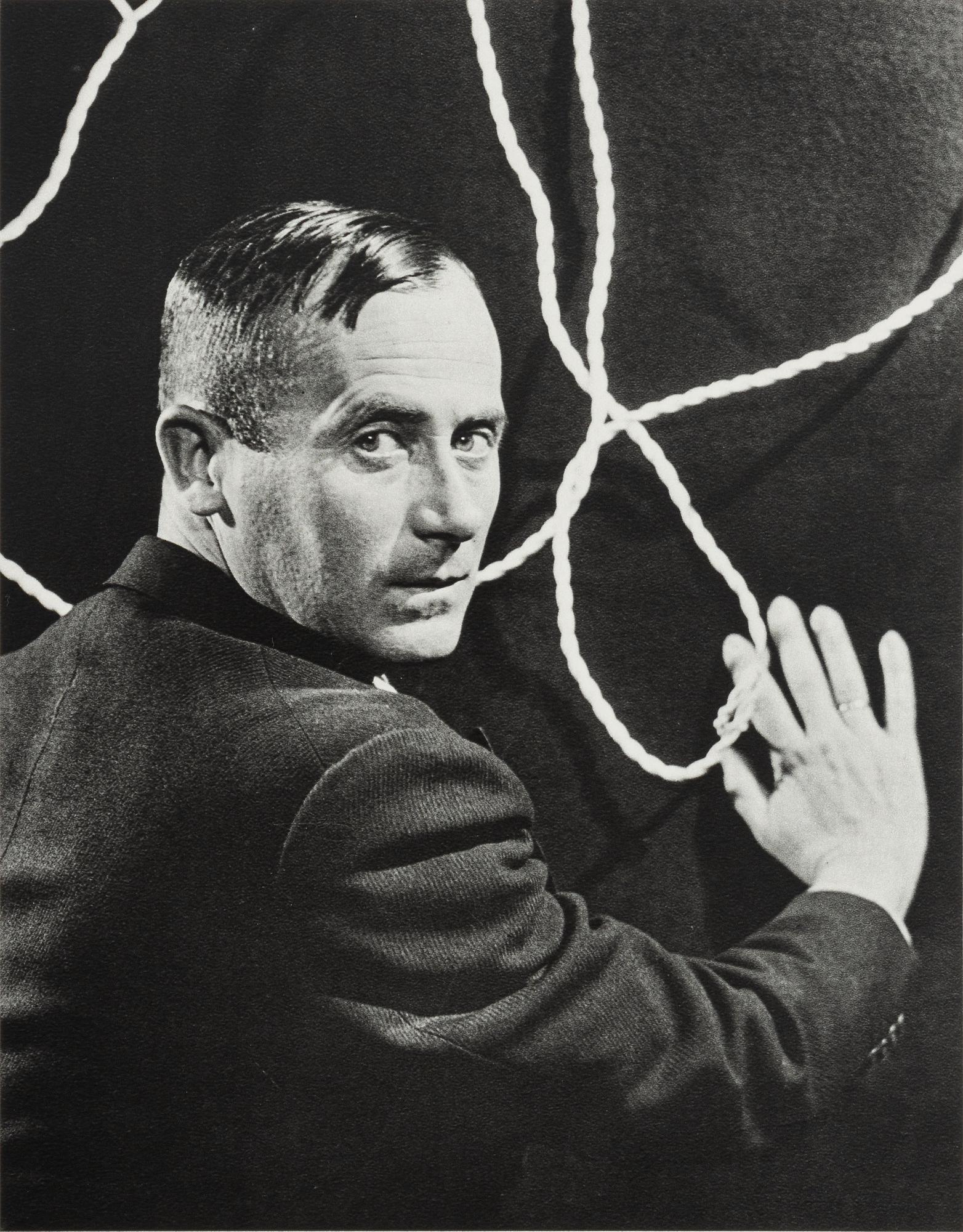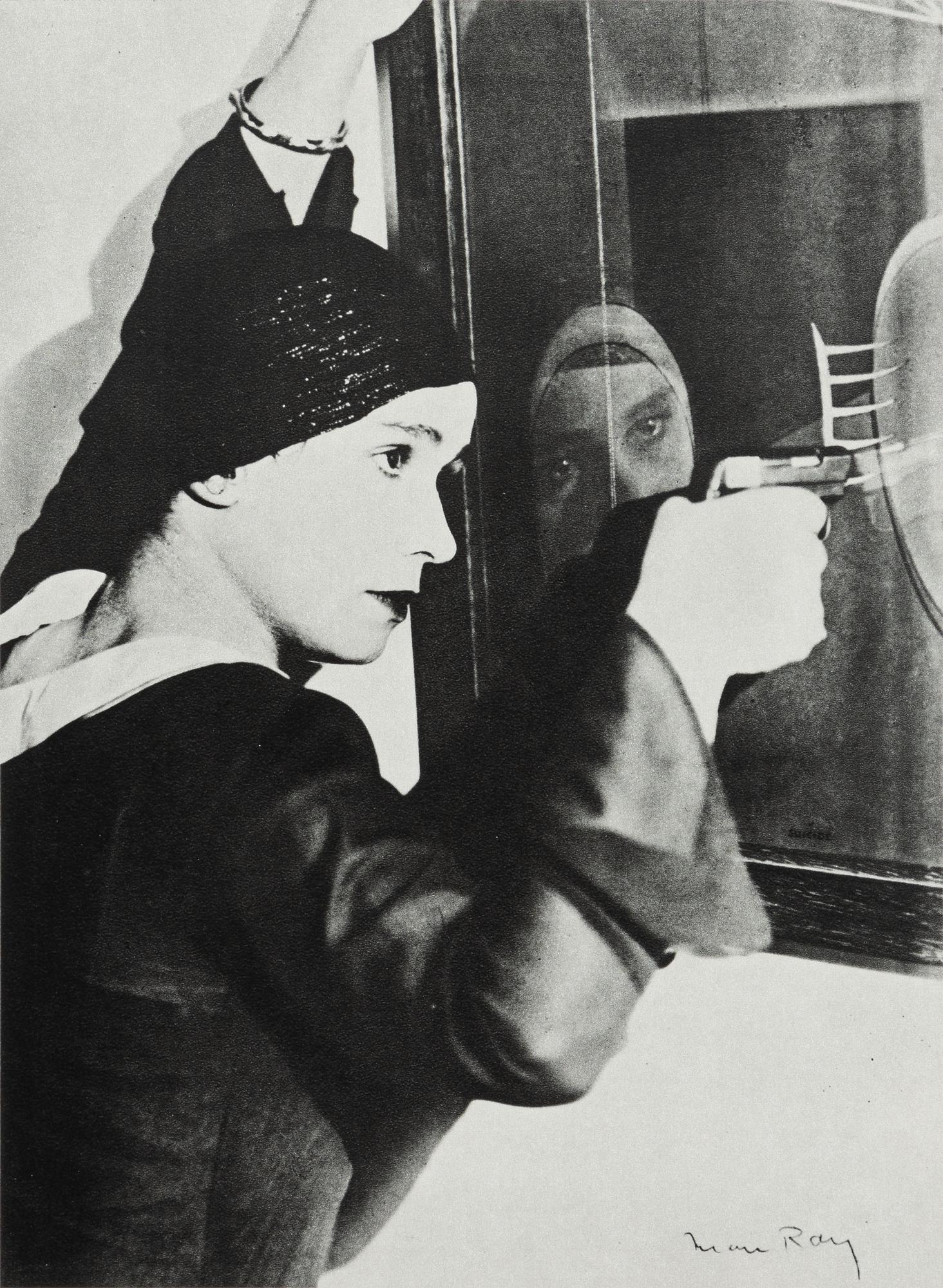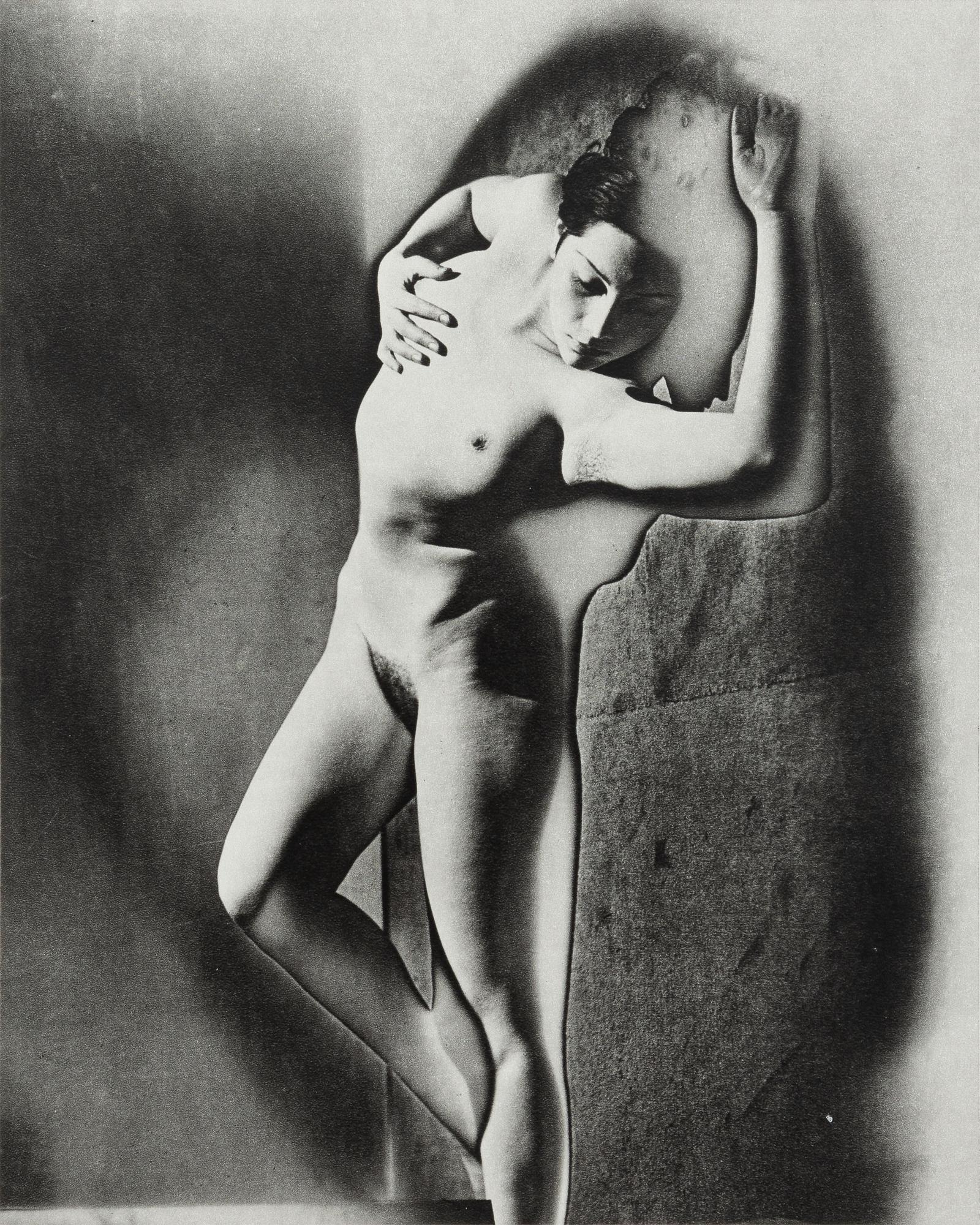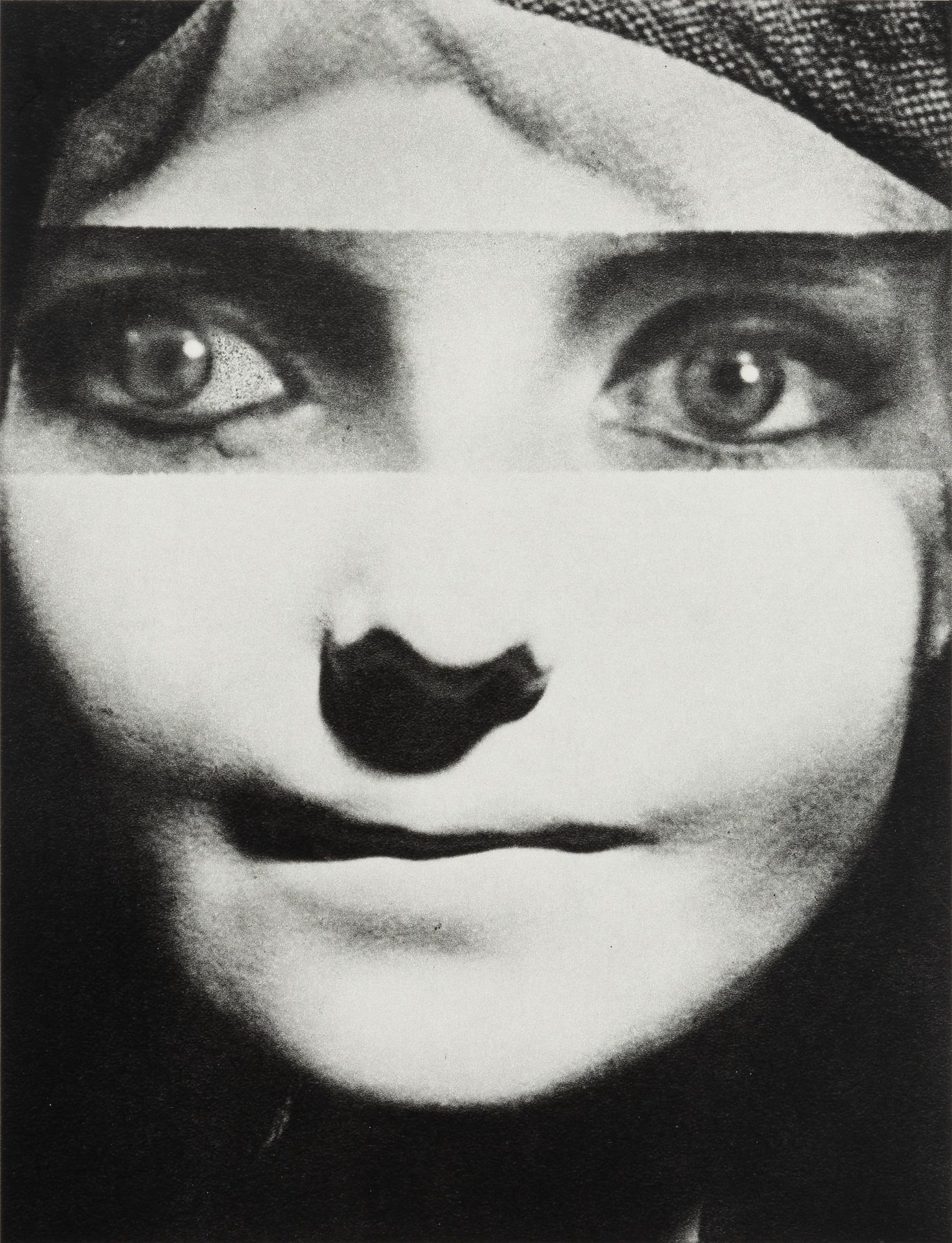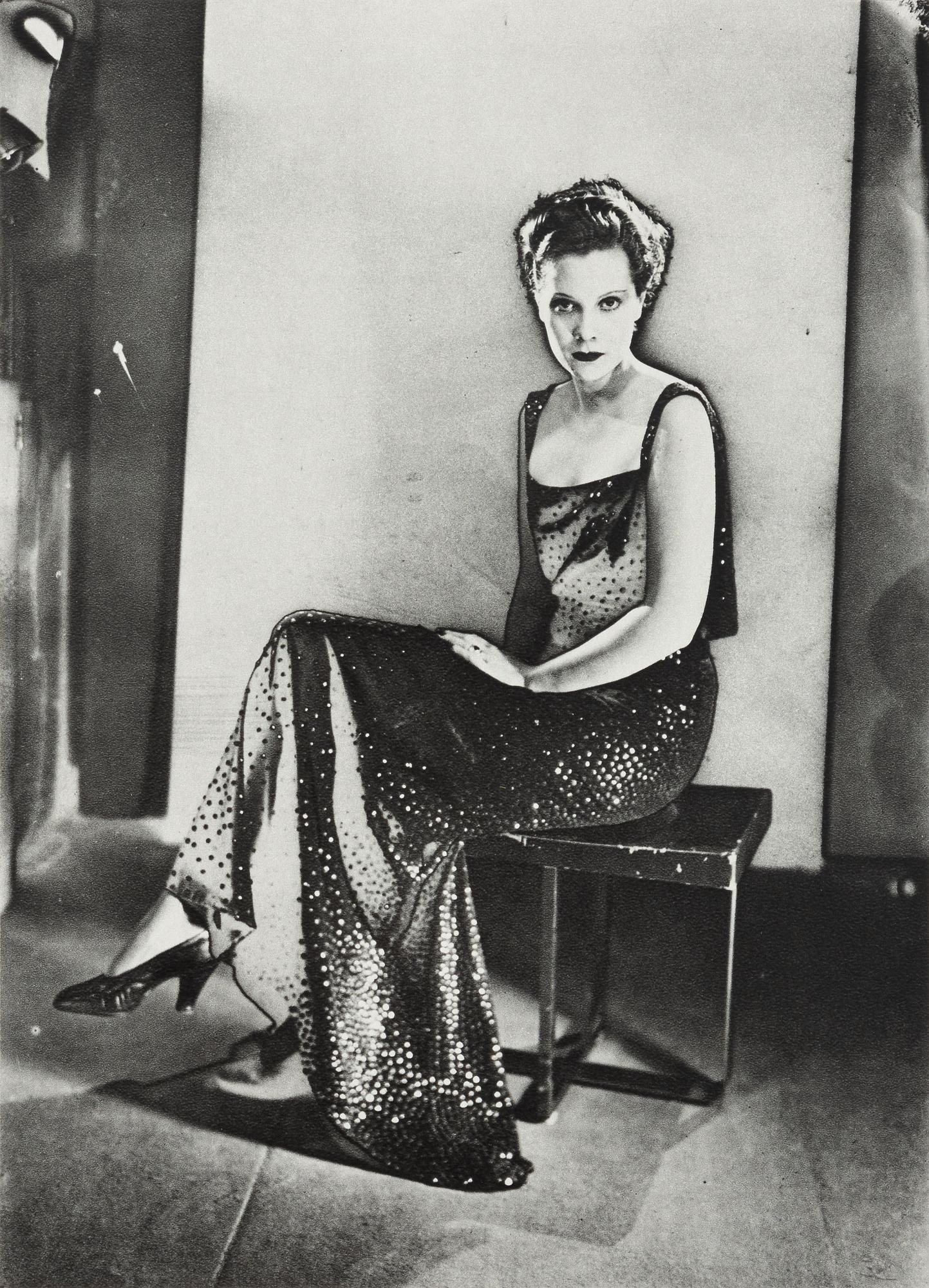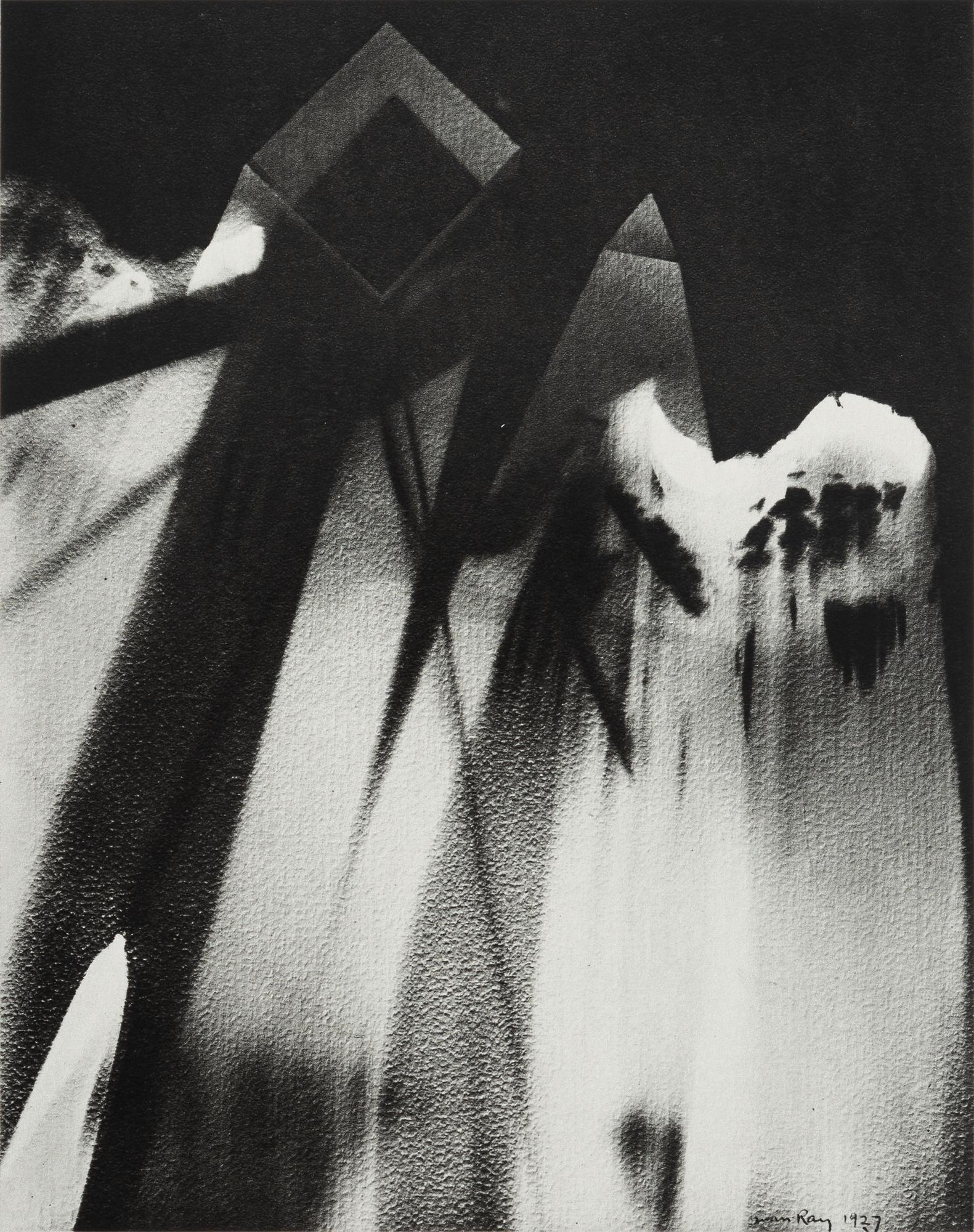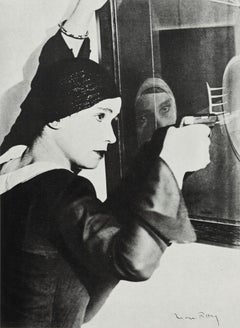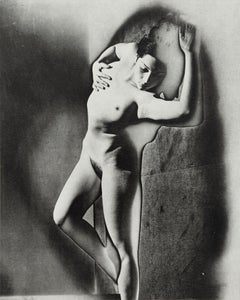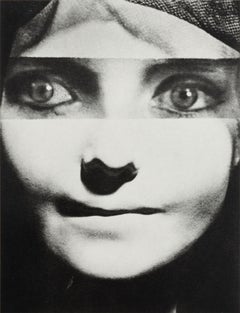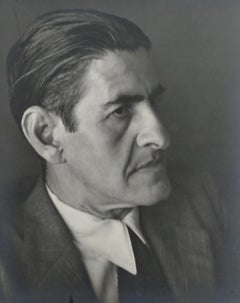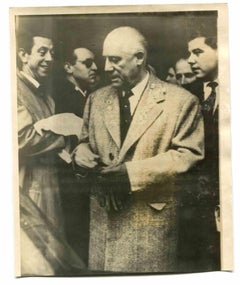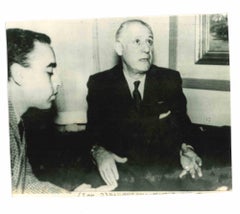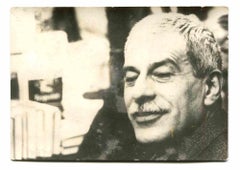Items Similar to Man Ray, Solarized Portrait of Georges Braque, Electa Editrice, 1980 (after)
Want more images or videos?
Request additional images or videos from the seller
1 of 11
Man Ray, Solarized Portrait of Georges Braque, Electa Editrice, 1980 (after)1980
1980
$956
$1,19520% Off
£742.04
£927.5520% Off
€845.43
€1,056.7920% Off
CA$1,366.23
CA$1,707.7820% Off
A$1,487.92
A$1,859.9120% Off
CHF 784.53
CHF 980.6620% Off
MX$18,097.46
MX$22,621.8320% Off
NOK 9,865.44
NOK 12,331.8120% Off
SEK 9,252.98
SEK 11,566.2220% Off
DKK 6,313.07
DKK 7,891.3420% Off
About the Item
This exquisite heliogravure after Man Ray (1890–1976), titled Solarized Portrait of Georges Braque, originates from the 1980 folio Man Ray, Electa Editrice Portfolios. Published by Gruppo Editoriale Electra, Milano, and printed by Gruppo Editoriale Electra, Milano, 1980. This work exemplifies Man Ray’s groundbreaking use of the solarization technique, developed in collaboration with his muse and assistant Lee Miller, in which brief exposure to light during development produced a glowing halo effect that blurred the boundary between photography and dream. In this striking portrait of the Cubist master Georges Braque, Man Ray transforms the face of his friend and contemporary into an otherworldly icon of modernism, uniting psychological depth with formal abstraction.
Executed as a heliogravure on velin paper, this work measures 15.75 x 11.75 inches. Unsigned and unnumbered as issued. The edition exemplifies the refined craftsmanship of Gruppo Editoriale Electra, Milano.
Artwork Details:
Artist: After Man Ray (1890–1976)
Title: Solarized Portrait of Georges Braque
Medium: Heliogravure on velin paper
Dimensions: 15.75 x 11.75 inches (40.01 x 29.84 cm)
Inscription: Unsigned and unnumbered as issued
Date: 1980
Publisher: Gruppo Editoriale Electra, Milano
Printer: Gruppo Editoriale Electra, Milano
Condition: Well preserved, consistent with age and medium
Provenance: From the folio Man Ray, Electa Editrice Portfolios, published and printed by Gruppo Editoriale Electra, Milano, 1980
Notes:
Excerpted from the folio (translated from Italian), Limited edition of M examples, drawn in heliogravure on special paper, designed specifically for the Portfolios Electa. Gruppo Editoriale Electra/Milan. Printed in Italy.
About the Publication:
The Man Ray, Electa Editrice Portfolio (1980) was published by Gruppo Editoriale Electra in Milan as part of the distinguished Electa Portfolios series, which celebrated the masters of 20th-century photography through the artisanal process of heliogravure printing. This edition was dedicated to Man Ray’s seminal body of photographic work from 1920 to 1934—an era in which he redefined modern image-making through technical invention, surrealist experimentation, and intellectual daring. Produced in collaboration with leading photographic historians and Italian master printers, the portfolio was printed on specially manufactured velin paper designed exclusively for the Electa Portfolios, ensuring tonal precision and textural depth true to the artist’s originals. The publication represents one of the most refined posthumous tributes to Man Ray’s legacy, combining Italian craftsmanship with avant-garde vision to preserve the luminous complexity of his photographs. Created with the same devotion to innovation and elegance that characterized Man Ray’s own practice, this edition remains an important intersection of fine art publishing and modernist history.
About the Artist:
Man Ray (1890–1976) was an American-born painter, sculptor, photographer, filmmaker, and conceptual visionary whose radical imagination and technical innovation transformed modern art and established him as one of the leading figures of the 20th century. Born Emmanuel Radnitzky in Philadelphia, he became a central force in both the Dada and Surrealist movements, defying artistic boundaries and redefining the relationship between art, technology, and the unconscious. After early involvement in New York’s avant-garde with Francis Picabia and Marcel Duchamp, Man Ray moved to Paris in 1921, where he joined a revolutionary circle of artists including Pablo Picasso, Alexander Calder, Alberto Giacometti, Salvador Dali, Joan Miro, Wassily Kandinsky, and Marcel Duchamp. There, he pioneered the “rayograph,” or photogram—a cameraless photographic technique that used light and shadow to create ethereal abstract compositions—and produced some of the most iconic images in art history, including Le Violon d’Ingres (1924) and Noire et Blanche (1926). His photography, distinguished by its fusion of elegance, surrealism, and psychological depth, captured the essence of modernist Paris and immortalized creative icons such as Kiki de Montparnasse, Gertrude Stein, and James Joyce. At the same time, Man Ray’s experimental films, including Le Retour a la Raison (1923) and L’Etoile de mer (1928), and his sculptural works like The Gift (1921) and Object to Be Destroyed (1923), expanded the possibilities of art itself, transforming ordinary objects into symbols of mystery and desire. His conceptual approach—viewing art as an idea rather than an object—anticipated later movements such as Pop Art, Minimalism, and Conceptual Art, profoundly influencing artists like Andy Warhol, Robert Rauschenberg, Jasper Johns, and Joseph Beuys, as well as photographers Helmut Newton, Guy Bourdin, Cindy Sherman, and Richard Avedon. Even in exile during World War II, while working in Los Angeles, he continued to innovate, blending Surrealist fantasy with the luminosity of the California landscape before returning to Paris, where he spent his final decades refining his poetic, intellectual, and sensuous vision. Exhibited in major institutions such as the Museum of Modern Art, the Tate Modern, and the Centre Pompidou, Man Ray’s work remains foundational to modern art history—bridging painting, photography, film, and sculpture in a body of work that continues to shape the language of visual culture. Standing alongside Pablo Picasso, Alexander Calder, Alberto Giacometti, Salvador Dali, Joan Miro, Wassily Kandinsky, and Marcel Duchamp, Man Ray endures as one of the most original and influential artists of the modern era. His highest auction record was achieved by Noire et Blanche (1926), which sold for 3.13 million USD at Christie’s, Paris, on November 9, 2017, confirming his status as a timeless innovator whose genius continues to inspire artists, collectors, and dreamers worldwide.
Man Ray Solarized Portrait of Georges Braque, Electa heliogravure 1980, Gruppo Editoriale Electra Milan, Man Ray collectible print.
- Creation Year:1980
- Dimensions:Height: 15.75 in (40.01 cm)Width: 11.75 in (29.85 cm)
- Medium:
- Movement & Style:
- After:Man Ray (1890 - 1976, American)
- Period:
- Condition:
- Gallery Location:Southampton, NY
- Reference Number:1stDibs: LU1465215307722
About the Seller
4.9
Platinum Seller
Premium sellers with a 4.7+ rating and 24-hour response times
Established in 1978
1stDibs seller since 2021
1,213 sales on 1stDibs
Typical response time: <1 hour
- ShippingRetrieving quote...Shipping from: Southampton, NY
- Return Policy
Authenticity Guarantee
In the unlikely event there’s an issue with an item’s authenticity, contact us within 1 year for a full refund. DetailsMoney-Back Guarantee
If your item is not as described, is damaged in transit, or does not arrive, contact us within 7 days for a full refund. Details24-Hour Cancellation
You have a 24-hour grace period in which to reconsider your purchase, with no questions asked.Vetted Professional Sellers
Our world-class sellers must adhere to strict standards for service and quality, maintaining the integrity of our listings.Price-Match Guarantee
If you find that a seller listed the same item for a lower price elsewhere, we’ll match it.Trusted Global Delivery
Our best-in-class carrier network provides specialized shipping options worldwide, including custom delivery.More From This Seller
View AllMan Ray, Joan Miro, from Electa Editrice, 1980 (after)
By Man Ray
Located in Southampton, NY
This exquisite heliogravure after Man Ray (1890–1976), titled Joan Miro, originates from the 1980 folio Man Ray, Electa Editrice Portfolios. Published by Gruppo Editoriale Electra, M...
Category
1980s Surrealist Figurative Photography
Materials
Lithograph
Man Ray, Untitled, from Electa Editrice, 1980 (after)
By Man Ray
Located in Southampton, NY
This exquisite heliogravure after Man Ray (1890–1976), titled Untitled, originates from the 1980 folio Man Ray, Electa Editrice Portfolios. Published by Gruppo Editoriale Electra, Mi...
Category
1980s Surrealist Figurative Photography
Materials
Lithograph
Man Ray, Preeminence of Matter Over Thought, from Electa Editrice, 1980 (after)
By Man Ray
Located in Southampton, NY
This exquisite heliogravure after Man Ray (1890–1976), titled Preeminence of Matter Over Thought, originates from the 1980 folio Man Ray, Electa Editrice Portfolios. Published by Gru...
Category
1980s Surrealist Figurative Photography
Materials
Lithograph
$956 Sale Price
20% Off
Free Shipping
Man Ray, Illustration for the Novel, Aurelien, 1980 (after)
By Man Ray
Located in Southampton, NY
This exquisite heliogravure after Man Ray (1890–1976), titled Illustration for the Novel, Aurelien, by Louis Aragon, originates from the 1980 folio Man Ray, Electa Editrice Portfolio...
Category
1980s Surrealist Figurative Photography
Materials
Lithograph
$956 Sale Price
20% Off
Free Shipping
Man Ray, Fashion Photography, Partial Solarization, 1980 (after)
By Man Ray
Located in Southampton, NY
This exquisite heliogravure after Man Ray (1890–1976), titled Fashion Photography, Partial Solarization, originates from the 1980 folio Man Ray, Electa Editrice Portfolios. Published...
Category
1980s Surrealist Figurative Photography
Materials
Lithograph
$956 Sale Price
20% Off
Free Shipping
Man Ray, Rayograph, from Electa Editrice, 1980 (after)
By Man Ray
Located in Southampton, NY
This exquisite heliogravure after Man Ray (1890–1976), titled Rayograph, originates from the 1980 folio Man Ray, Electa Editrice Portfolios. Published by Gruppo Editoriale Electra, Milano, and printed by Gruppo Editoriale Electra, Milano, 1980. This image exemplifies Man Ray’s pioneering “rayograph” technique—a cameraless photographic process in which objects were placed directly onto photosensitive paper and exposed to light, creating luminous abstract compositions that fused chance, intuition, and surrealist invention. Through this groundbreaking process, Man Ray transformed photography into pure visual poetry, redefining its potential as a form of modern art.
Executed as a heliogravure on velin paper, this work measures 15.75 x 11.75 inches. Unsigned and unnumbered as issued. The edition exemplifies the refined craftsmanship of Gruppo Editoriale Electra, Milano.
Artwork Details:
Artist: After Man Ray (1890–1976)
Title: Rayograph
Medium: Heliogravure on velin paper
Dimensions: 15.75 x 11.75 inches (40.01 x 29.84 cm)
Inscription: Unsigned and unnumbered as issued
Date: 1980
Publisher: Gruppo Editoriale Electra, Milano
Printer: Gruppo Editoriale Electra, Milano
Condition: Well preserved, consistent with age and medium
Provenance: From the folio Man Ray, Electa Editrice Portfolios, published and printed by Gruppo Editoriale Electra, Milano, 1980
Notes:
Excerpted from the folio (translated from Italian), Limited edition of M examples, drawn in heliogravure on special paper, designed specifically for the Portfolios Electa. Gruppo Editoriale Electra/Milan. Printed in Italy.
About the Publication:
The Man Ray, Electa Editrice Portfolio (1980) was published by Gruppo Editoriale Electra in Milan as part of the distinguished Electa Portfolios series, which celebrated the masters of 20th-century photography through the artisanal process of heliogravure printing. This edition was dedicated to Man Ray’s seminal body of photographic work from 1920 to 1934—an era in which he redefined modern image-making through technical invention, surrealist experimentation, and intellectual daring. Produced in collaboration with leading photographic historians and Italian master printers, the portfolio was printed on specially manufactured velin paper designed exclusively for the Electa Portfolios, ensuring tonal precision and textural depth true to the artist’s originals. The publication represents one of the most refined posthumous tributes to Man Ray’s legacy, combining Italian craftsmanship with avant-garde vision to preserve the luminous complexity of his photographs. Created with the same devotion to innovation and elegance that characterized Man Ray’s own practice, this edition remains an important intersection of fine art publishing and modernist history.
About the Artist:
Man Ray (1890–1976) was an American-born painter, sculptor, photographer, filmmaker, and conceptual visionary whose radical imagination and technical innovation transformed modern art and established him as one of the leading figures of the 20th century. Born Emmanuel Radnitzky in Philadelphia, he became a central force in both the Dada and Surrealist movements, defying artistic boundaries and redefining the relationship between art, technology, and the unconscious. After early involvement in New York’s avant-garde with Francis Picabia and Marcel Duchamp, Man Ray moved to Paris in 1921, where he joined a revolutionary circle of artists including Pablo Picasso, Alexander Calder, Alberto Giacometti, Salvador Dali, Joan Miro, Wassily Kandinsky, and Marcel Duchamp. There, he pioneered the “rayograph,” or photogram—a cameraless photographic technique that used light and shadow to create ethereal abstract compositions—and produced some of the most iconic images in art history, including Le Violon d’Ingres (1924) and Noire et Blanche (1926). His photography, distinguished by its fusion of elegance, surrealism, and psychological depth, captured the essence of modernist Paris and immortalized creative icons such as Kiki de Montparnasse, Gertrude Stein, and James Joyce. At the same time, Man Ray’s experimental films, including Le Retour a la Raison (1923) and L’Etoile de mer (1928), and his sculptural works like The Gift (1921) and Object to Be Destroyed (1923), expanded the possibilities of art itself, transforming ordinary objects into symbols of mystery and desire. His conceptual approach—viewing art as an idea rather than an object—anticipated later movements such as Pop Art, Minimalism, and Conceptual Art, profoundly influencing artists like Andy Warhol, Robert Rauschenberg, Jasper Johns, and Joseph Beuys, as well as photographers Helmut Newton, Guy Bourdin, Cindy Sherman, and Richard Avedon. Even in exile during World War II, while working in Los Angeles, he continued to innovate, blending Surrealist fantasy with the luminosity of the California landscape before returning to Paris, where he spent his final decades refining his poetic, intellectual, and sensuous vision. Exhibited in major institutions such as the Museum of Modern Art, the Tate Modern, and the Centre Pompidou, Man Ray’s work remains foundational to modern art history—bridging painting, photography, film, and sculpture in a body of work that continues to shape the language of visual culture. Standing alongside Pablo Picasso, Alexander Calder, Alberto Giacometti, Salvador Dali, Joan Miro, Wassily Kandinsky, and Marcel Duchamp, Man Ray endures as one of the most original and influential artists of the modern era. His highest auction record was achieved by Noire et Blanche (1926), which sold for 3.13 million USD at Christie’s, Paris, on November 9, 2017, confirming his status as a timeless innovator whose genius continues to inspire artists, collectors, and dreamers worldwide.
Man Ray Rayograph...
Category
1980s Surrealist Figurative Photography
Materials
Lithograph
You May Also Like
Dr. Siegfried Bernfeld
By Sonya Noskowiak
Located in Denton, TX
Signed in pencil on mount margin.
Category
Early 20th Century Modern Portrait Photography
Materials
Silver Gelatin
General Raoul Salan- Photo - 1960s
Located in Roma, IT
General Raoul Salan is a black and white vintage photograph realized in the 1960s. It belongs to historical album including photo reportages of historical events and political issues...
Category
1960s Modern Figurative Photography
Materials
Photographic Paper
French General Raoul Salan - 1960s
Located in Roma, IT
French General Raoul Salan is a black and white vintage photo, realized in the 1960s. It belongs to historical album including photo reportages of historical moment and political eve...
Category
1960s Contemporary Figurative Photography
Materials
Photographic Paper
Elio Vittorini - Vintage photo - 1960s
Located in Roma, IT
Elio Vittorini is a vintage photo, realized in the 1960s.
The artwork is a well-balanced composition.
Category
1970s Modern Figurative Photography
Materials
Photographic Paper
Prof Sir Albert Richardson PRA Photographic Portrait II C.1960
By Albert Richardson
Located in London, GB
To see our other Modern British Art, scroll down to "More from this Seller" and below it click on "See all from this Seller" - or send us a message if you cannot find the artist you want.
Prof Sir Albert Richardson...
Category
1960s Modern Portrait Photography
Materials
Photographic Paper
Historical Photo - Vintage Photo - mid-20th century
Located in Roma, IT
Historical Photo is a black and white vintage photo, realized in the mid-20th century.
Good conditions, with some decoloration spots and aged margins.
It belongs to a historical al...
Category
Mid-20th Century Contemporary Figurative Photography
Materials
Photographic Paper
